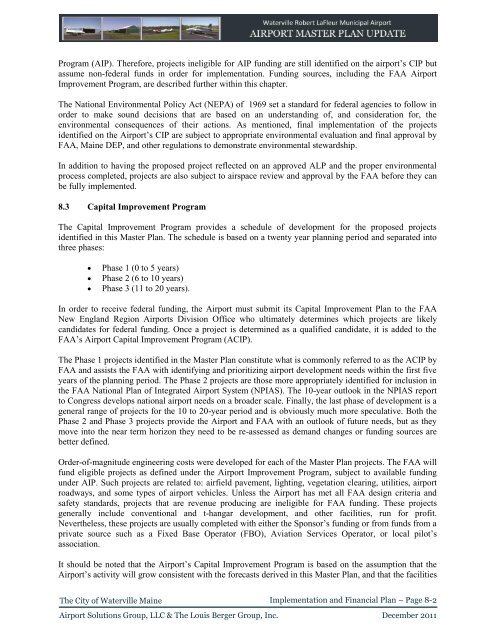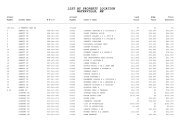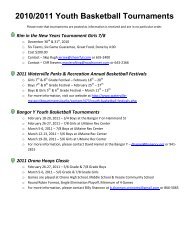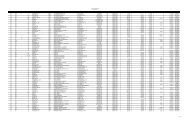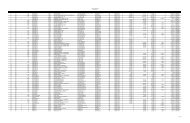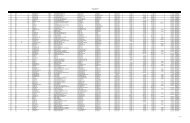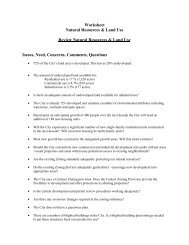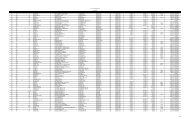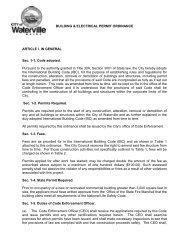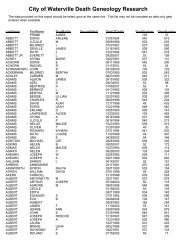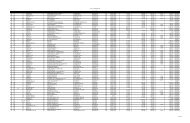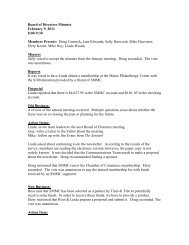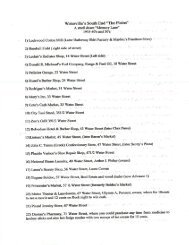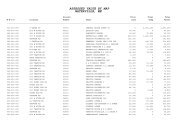Airport Master Plan 2012 - City of Waterville
Airport Master Plan 2012 - City of Waterville
Airport Master Plan 2012 - City of Waterville
Create successful ePaper yourself
Turn your PDF publications into a flip-book with our unique Google optimized e-Paper software.
Program (AIP). Therefore, projects ineligible for AIP funding are still identified on the airport’s CIP but<br />
assume non-federal funds in order for implementation. Funding sources, including the FAA <strong>Airport</strong><br />
Improvement Program, are described further within this chapter.<br />
The National Environmental Policy Act (NEPA) <strong>of</strong> 1969 set a standard for federal agencies to follow in<br />
order to make sound decisions that are based on an understanding <strong>of</strong>, and consideration for, the<br />
environmental consequences <strong>of</strong> their actions. As mentioned, final implementation <strong>of</strong> the projects<br />
identified on the <strong>Airport</strong>’s CIP are subject to appropriate environmental evaluation and final approval by<br />
FAA, Maine DEP, and other regulations to demonstrate environmental stewardship.<br />
In addition to having the proposed project reflected on an approved ALP and the proper environmental<br />
process completed, projects are also subject to airspace review and approval by the FAA before they can<br />
be fully implemented.<br />
8.3 Capital Improvement Program<br />
The Capital Improvement Program provides a schedule <strong>of</strong> development for the proposed projects<br />
identified in this <strong>Master</strong> <strong>Plan</strong>. The schedule is based on a twenty year planning period and separated into<br />
three phases:<br />
<br />
<br />
<br />
Phase 1 (0 to 5 years)<br />
Phase 2 (6 to 10 years)<br />
Phase 3 (11 to 20 years).<br />
In order to receive federal funding, the <strong>Airport</strong> must submit its Capital Improvement <strong>Plan</strong> to the FAA<br />
New England Region <strong>Airport</strong>s Division Office who ultimately determines which projects are likely<br />
candidates for federal funding. Once a project is determined as a qualified candidate, it is added to the<br />
FAA’s <strong>Airport</strong> Capital Improvement Program (ACIP).<br />
The Phase 1 projects identified in the <strong>Master</strong> <strong>Plan</strong> constitute what is commonly referred to as the ACIP by<br />
FAA and assists the FAA with identifying and prioritizing airport development needs within the first five<br />
years <strong>of</strong> the planning period. The Phase 2 projects are those more appropriately identified for inclusion in<br />
the FAA National <strong>Plan</strong> <strong>of</strong> Integrated <strong>Airport</strong> System (NPIAS). The 10-year outlook in the NPIAS report<br />
to Congress develops national airport needs on a broader scale. Finally, the last phase <strong>of</strong> development is a<br />
general range <strong>of</strong> projects for the 10 to 20-year period and is obviously much more speculative. Both the<br />
Phase 2 and Phase 3 projects provide the <strong>Airport</strong> and FAA with an outlook <strong>of</strong> future needs, but as they<br />
move into the near term horizon they need to be re-assessed as demand changes or funding sources are<br />
better defined.<br />
Order-<strong>of</strong>-magnitude engineering costs were developed for each <strong>of</strong> the <strong>Master</strong> <strong>Plan</strong> projects. The FAA will<br />
fund eligible projects as defined under the <strong>Airport</strong> Improvement Program, subject to available funding<br />
under AIP. Such projects are related to: airfield pavement, lighting, vegetation clearing, utilities, airport<br />
roadways, and some types <strong>of</strong> airport vehicles. Unless the <strong>Airport</strong> has met all FAA design criteria and<br />
safety standards, projects that are revenue producing are ineligible for FAA funding. These projects<br />
generally include conventional and t-hangar development, and other facilities, run for pr<strong>of</strong>it.<br />
Nevertheless, these projects are usually completed with either the Sponsor’s funding or from funds from a<br />
private source such as a Fixed Base Operator (FBO), Aviation Services Operator, or local pilot’s<br />
association.<br />
It should be noted that the <strong>Airport</strong>’s Capital Improvement Program is based on the assumption that the<br />
<strong>Airport</strong>’s activity will grow consistent with the forecasts derived in this <strong>Master</strong> <strong>Plan</strong>, and that the facilities<br />
The <strong>City</strong> <strong>of</strong> <strong>Waterville</strong> Maine<br />
Implementation and Financial <strong>Plan</strong> – Page 8-2<br />
<strong>Airport</strong> Solutions Group, LLC & The Louis Berger Group, Inc. December 2011


